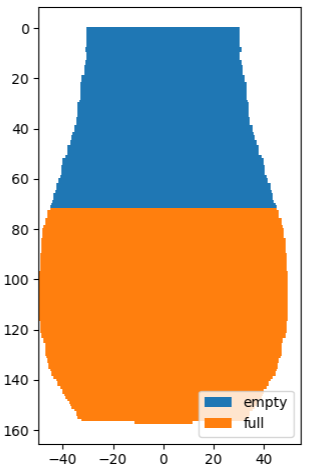Engineers: the jug is twice as big as it needs to be
It has a safety factor of 2 dB.
This roughly checks out. I’m getting 66%, based on the methodology of cutting out the jug’s shape from the picture and numerically integrating the filled and empty volume (e.g. if a row is
dpixels wide, it contributesd^2to the volume, either filled or empty depending on whether it’s above or below the water level).
@lukewarm_ozone I hope you actually did that math.
The thing I said I did? Yes; here’s the processed image:

If you mean the math in the post, I can’t read it in this picture but it’s probably just some boring body-of-rotation-related integrals, so basically the same thing as I did but breaking apart the vase’s visible shape into analytically simple parts, whereas I got the shape from the image directly.
No. The fullness or emptiness depends on whether the last action was pouring water into or out of the jug.
Exactly - or the next action. The question “is the glass half full or empty” is a false dichotomy, the answer is: it is impossible to know without further info.
How exactly does it depend on next action? Is it half full by that logic if next action would be to fill it up further?
Yes. If the next action is to add it’s half full, if to remove it’s half empty. If nothing then it depends on the previous actions.
So the glass is in a quantum superposition until an entity decides to act on it
That’s funny. But the glass is not in a superposition, the answer to the question is. It’s a glass that contains water and is just sitting there observable by all probably sick of being subject to stupid questions that have no meaningful answer.



